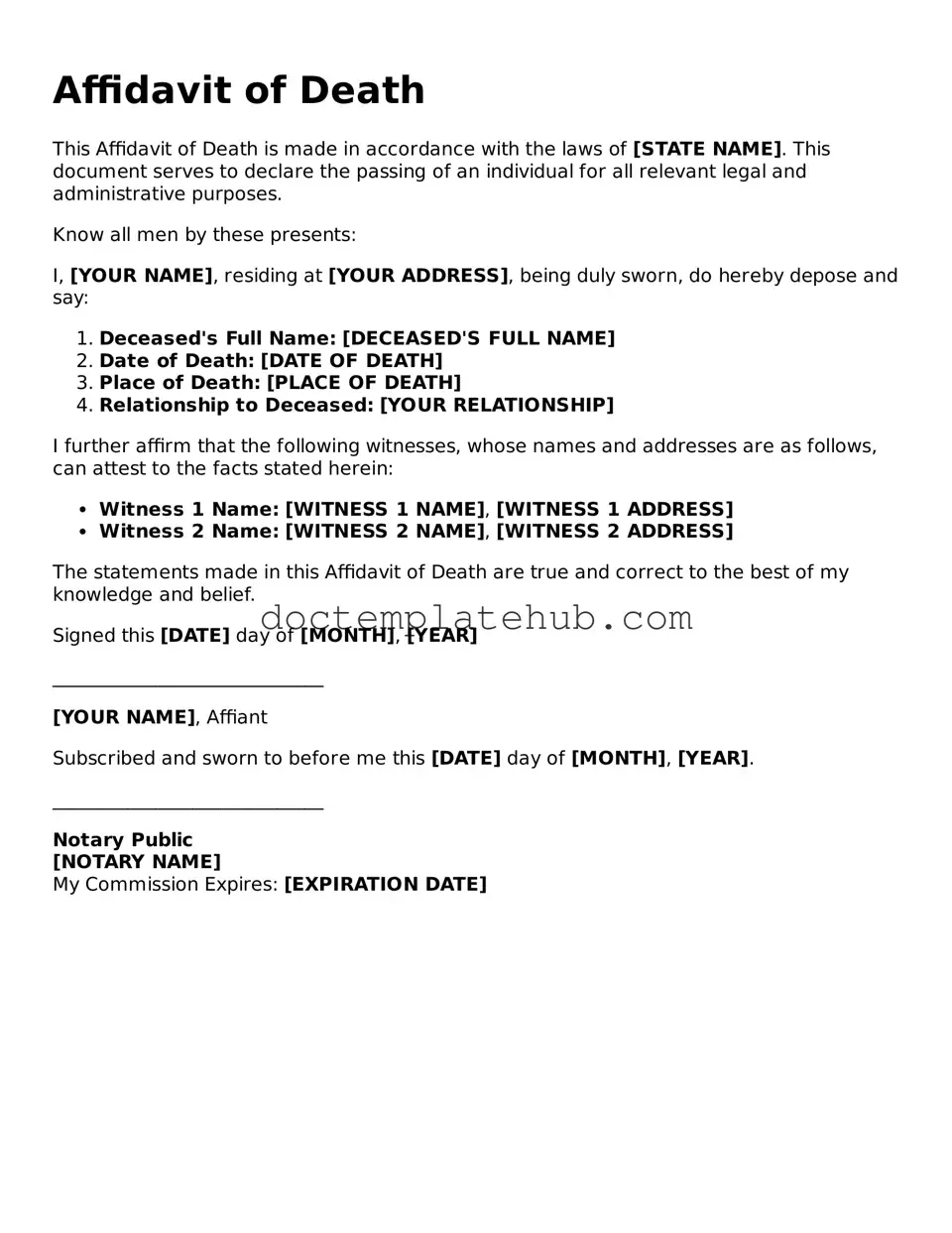What is an Affidavit of Death?
An Affidavit of Death is a legal document that confirms an individual's death. This form is often used to settle estates, transfer property, or handle other legal matters that require proof of death. It is typically signed by someone who has personal knowledge of the death, such as a family member or close friend, and may need to be notarized to be considered valid.
Who can complete an Affidavit of Death?
Generally, anyone who has first-hand knowledge of the deceased's death can complete the Affidavit of Death. This could include family members, friends, or other individuals who were close to the deceased. However, it is essential to ensure that the person completing the affidavit is reliable and can provide accurate information about the death.
What information is required on the Affidavit of Death?
The Affidavit of Death typically requires several key pieces of information. This includes the full name of the deceased, their date of birth, the date of death, and the place of death. Additionally, the affiant (the person completing the affidavit) must provide their own name, relationship to the deceased, and contact information. Some forms may also ask for details about the deceased's last residence and any relevant legal proceedings.
Is the Affidavit of Death the same as a death certificate?
No, an Affidavit of Death is not the same as a death certificate. A death certificate is an official document issued by a government authority, typically a vital records office, that provides legal proof of death. In contrast, an Affidavit of Death is a sworn statement that may be used in various legal contexts but does not replace the need for a death certificate in most situations.
Where do I file the Affidavit of Death?
The filing location for an Affidavit of Death can vary depending on the purpose of the affidavit. If it is being used in connection with an estate or property transfer, it may need to be filed with the probate court or the county recorder's office. It is advisable to check with local authorities or legal counsel to determine the correct filing procedure for your specific situation.
